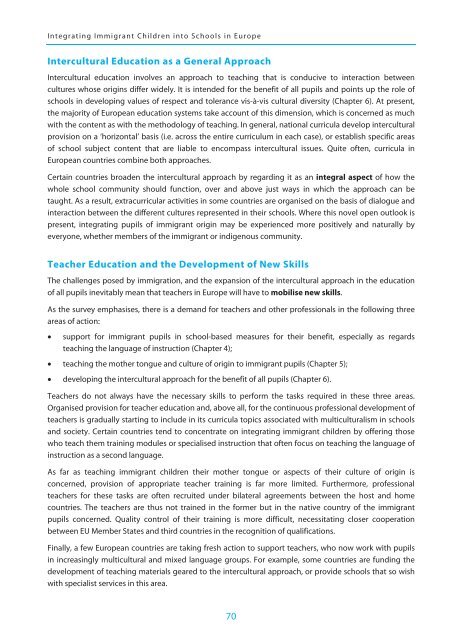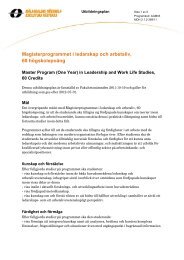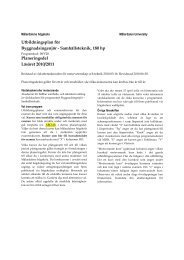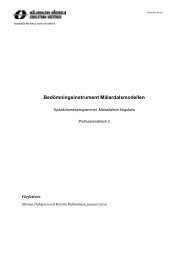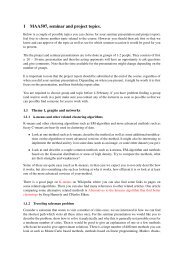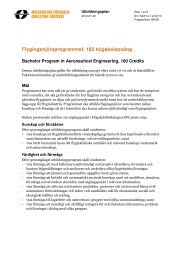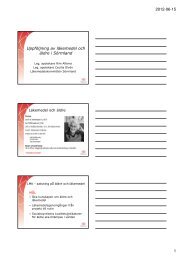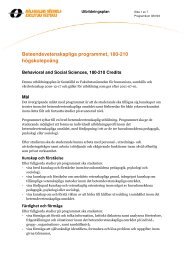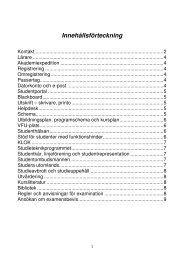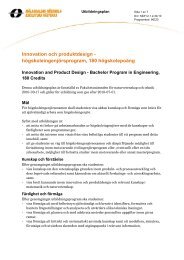Integrating Immigrant Children into Schools in Europe
Integrating Immigrant Children into Schools in Europe
Integrating Immigrant Children into Schools in Europe
You also want an ePaper? Increase the reach of your titles
YUMPU automatically turns print PDFs into web optimized ePapers that Google loves.
<strong>Integrat<strong>in</strong>g</strong> <strong>Immigrant</strong> <strong>Children</strong> <strong><strong>in</strong>to</strong> <strong>Schools</strong> <strong>in</strong> <strong>Europe</strong>Intercultural Education as a General ApproachIntercultural education <strong>in</strong>volves an approach to teach<strong>in</strong>g that is conducive to <strong>in</strong>teraction betweencultures whose orig<strong>in</strong>s differ widely. It is <strong>in</strong>tended for the benefit of all pupils and po<strong>in</strong>ts up the role ofschools <strong>in</strong> develop<strong>in</strong>g values of respect and tolerance vis-à-vis cultural diversity (Chapter 6). At present,the majority of <strong>Europe</strong>an education systems take account of this dimension, which is concerned as muchwith the content as with the methodology of teach<strong>in</strong>g. In general, national curricula develop <strong>in</strong>terculturalprovision on a ‘horizontal’ basis (i.e. across the entire curriculum <strong>in</strong> each case), or establish specific areasof school subject content that are liable to encompass <strong>in</strong>tercultural issues. Quite often, curricula <strong>in</strong><strong>Europe</strong>an countries comb<strong>in</strong>e both approaches.Certa<strong>in</strong> countries broaden the <strong>in</strong>tercultural approach by regard<strong>in</strong>g it as an <strong>in</strong>tegral aspect of how thewhole school community should function, over and above just ways <strong>in</strong> which the approach can betaught. As a result, extracurricular activities <strong>in</strong> some countries are organised on the basis of dialogue and<strong>in</strong>teraction between the different cultures represented <strong>in</strong> their schools. Where this novel open outlook ispresent, <strong>in</strong>tegrat<strong>in</strong>g pupils of immigrant orig<strong>in</strong> may be experienced more positively and naturally byeveryone, whether members of the immigrant or <strong>in</strong>digenous community.Teacher Education and the Development of New SkillsThe challenges posed by immigration, and the expansion of the <strong>in</strong>tercultural approach <strong>in</strong> the educationof all pupils <strong>in</strong>evitably mean that teachers <strong>in</strong> <strong>Europe</strong> will have to mobilise new skills.As the survey emphasises, there is a demand for teachers and other professionals <strong>in</strong> the follow<strong>in</strong>g threeareas of action:support for immigrant pupils <strong>in</strong> school-based measures for their benefit, especially as regardsteach<strong>in</strong>g the language of <strong>in</strong>struction (Chapter 4); teach<strong>in</strong>g the mother tongue and culture of orig<strong>in</strong> to immigrant pupils (Chapter 5); develop<strong>in</strong>g the <strong>in</strong>tercultural approach for the benefit of all pupils (Chapter 6).Teachers do not always have the necessary skills to perform the tasks required <strong>in</strong> these three areas.Organised provision for teacher education and, above all, for the cont<strong>in</strong>uous professional development ofteachers is gradually start<strong>in</strong>g to <strong>in</strong>clude <strong>in</strong> its curricula topics associated with multiculturalism <strong>in</strong> schoolsand society. Certa<strong>in</strong> countries tend to concentrate on <strong>in</strong>tegrat<strong>in</strong>g immigrant children by offer<strong>in</strong>g thosewho teach them tra<strong>in</strong><strong>in</strong>g modules or specialised <strong>in</strong>struction that often focus on teach<strong>in</strong>g the language of<strong>in</strong>struction as a second language.As far as teach<strong>in</strong>g immigrant children their mother tongue or aspects of their culture of orig<strong>in</strong> isconcerned, provision of appropriate teacher tra<strong>in</strong><strong>in</strong>g is far more limited. Furthermore, professionalteachers for these tasks are often recruited under bilateral agreements between the host and homecountries. The teachers are thus not tra<strong>in</strong>ed <strong>in</strong> the former but <strong>in</strong> the native country of the immigrantpupils concerned. Quality control of their tra<strong>in</strong><strong>in</strong>g is more difficult, necessitat<strong>in</strong>g closer cooperationbetween EU Member States and third countries <strong>in</strong> the recognition of qualifications.F<strong>in</strong>ally, a few <strong>Europe</strong>an countries are tak<strong>in</strong>g fresh action to support teachers, who now work with pupils<strong>in</strong> <strong>in</strong>creas<strong>in</strong>gly multicultural and mixed language groups. For example, some countries are fund<strong>in</strong>g thedevelopment of teach<strong>in</strong>g materials geared to the <strong>in</strong>tercultural approach, or provide schools that so wishwith specialist services <strong>in</strong> this area.70


